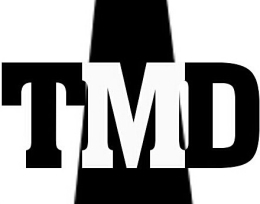Unbroken Circle is a recurring feature where I discuss classic country songs.

The mid-to-late 1980s saw a changing of the guard in country music. The most prominent example, of course, is the “class of ‘89,” which launched Alan Jackson, Clint Black, Travis Tritt and Garth Brooks – all of whom represented different sides of the same country coin. Before that, the lesser known “class of ‘86” operated in roughly the same fashion. Acts like Steve Earle and Lyle Lovett flavored their country music with hints of rock, blues and folk music; meanwhile, someone like Dwight Yoakam combined a traditional sound with a contemporary attitude.
It’s not by coincidence, either. When the Urban Cowboy phenomenon gave country music and its culture widespread exposure, record labels increased budgets and expanded staffs to handle what at the time appeared to be more than a passing fad. More significantly, artists took note of their increased popularity and, through their managers, did their best to commit record labels contractually to appropriate royalty arrangements. Logical, yes, but it also meant some very expensive deals were cut in those years – deals that called for large advances and for significantly higher guaranteed payments when artists completed albums. Those deals, however, outlived the business climate and what did, in fact, turn out to be a passing trend. Something had to give, and in a battle between record labels and their artists, it shouldn’t be surprising as to what did.
Big-name artists with long-standing label relationships found themselves without contracts (although some cuts weren’t as drastic as others) or switching labels when management passed on their terms for renewal. George Jones’ 1985 hit “Who’s Gonna Fill Their Shoes” wasn’t just a nod to tradition – it was a literal cry for help.
Commercially, country music’s share of total record sales during the Urban Cowboy era was approximately 15 percent; by 1986, that total fell to 9 percent. Artistically, however, this allowed for a new generation of artists to enter the format, and pared-down A&R staffs were more open to fresh musical approaches than they might have been earlier. So we could have Earle, Lovett, Yoakam … and a young artist, who, ironically, seemed most likely to step up and answer Jones’ aforementioned question – Randy Travis.
Well, it was actually Randy Traywick at first, and while record labels were open to fresh musical approaches, that didn’t include sounding like the many legends just booted off country radio playlists. Travis’ own story also recalled some of his country heroes, including a youthful brush with the law before finding solace in country music, performing in clubs at just 14 years old. On February 14, 1985, Travis signed a contract with Warner Bros. Records to record a full album if one of the first four songs “caught.” According to Michael Kosser’s How Nashville Became Music City U.S.A., Martha Sharp, head of Warner’s A&R, asked Bob Saporiti to see Travis at the Nashville Palace, where Travis also worked as a cook.
“I went in and I asked Lib [Hatcher, his manager] where he was, and she said, ‘In the kitchen.’ I went into the kitchen and here’s this guy peelin’ potatoes,” Saporiti said. “I said, ‘I’m here to see Randy Travis,’ and he said, ‘I’m Randy Travis.’ I said, ‘well, Randy Travis the entertainer.’ He goes, ‘well, as soon as I finish these spuds, I’m gonna go play.’ So he played, blew me away of course, ‘cause he was Randy Travis. Afterwards, he was back in the kitchen cleanin’ the pots.”
Traywick became Travis after he’d had enough of emcees introducing him as “Randy Tire-Wick.” It was Sharp’s idea, though Travis enjoyed it, seeing as he liked the music of fellow country artist Merle Travis. This, of course, led to its own complications, including a woman who approached him one night and said, “I was a big fan of your daddy.” Travis would later find out she wasn’t referring to Harold Traywick.
If only radio had been as excited to hear Travis as that woman and Saporiti were. Travis released his debut single, “On The Other Hand,” to country radio, where it peaked at a paltry No. 67 on the airplay chart. His next single, “1982,” was deemed, ironically, as “a little less country” than his previous single. When it peaked at No. 6, Travis’ team decided to do the unthinkable and re-release his debut single. After it debuted at No. 64, it went on to become Travis’ first No. 1 hit, paving the way for his career.
The song itself was conceived by Don Schlitz and Paul Overstreet. The two had been working on a song called “Greedy Heart,” but kept hitting snags with the finishing touches. So they ran down their options in a list of lyrical ideas. As Schlitz ran down the list, he blurted out, “on the other hand … ,” to which Overstreet replied with, “there’s a golden band.” No longer did they have any trouble finishing the song. They envinsioned it for George Jones, Merle Haggard or even Dan Seals. They sent the song to promoter Pat Higdon, who relayed it to Seals’ producer, Kyle Lehning. Lehning wanted it for Travis, to which Schlitz and Overstreet replied with, “Randy who?”
The song also helped launch Travis’ debut album, The Storms Of Life, one of the most commercially and critically successful country albums of all time. And whereas other new artists had their own unique flags planted in country music’s landscape during this time, Travis had his own – “The New Tradition.”
Join me next on The Unbroken Circle, where we’ll discuss Tom T. Hall’s “The Year That Clayton Delaney Died” and a musical inspiration of a different variety.

